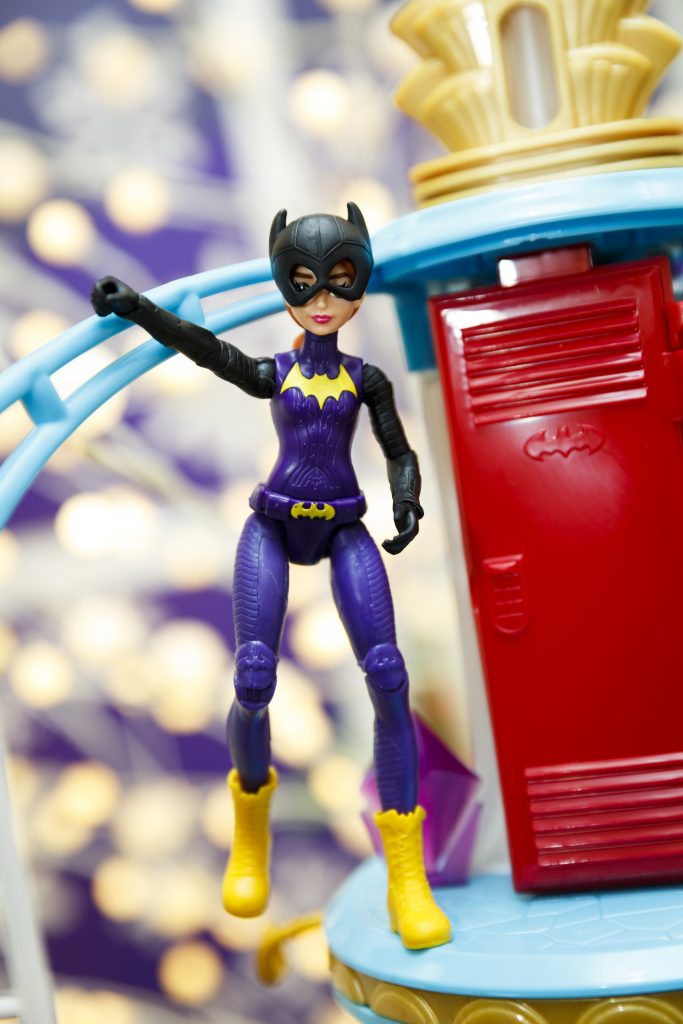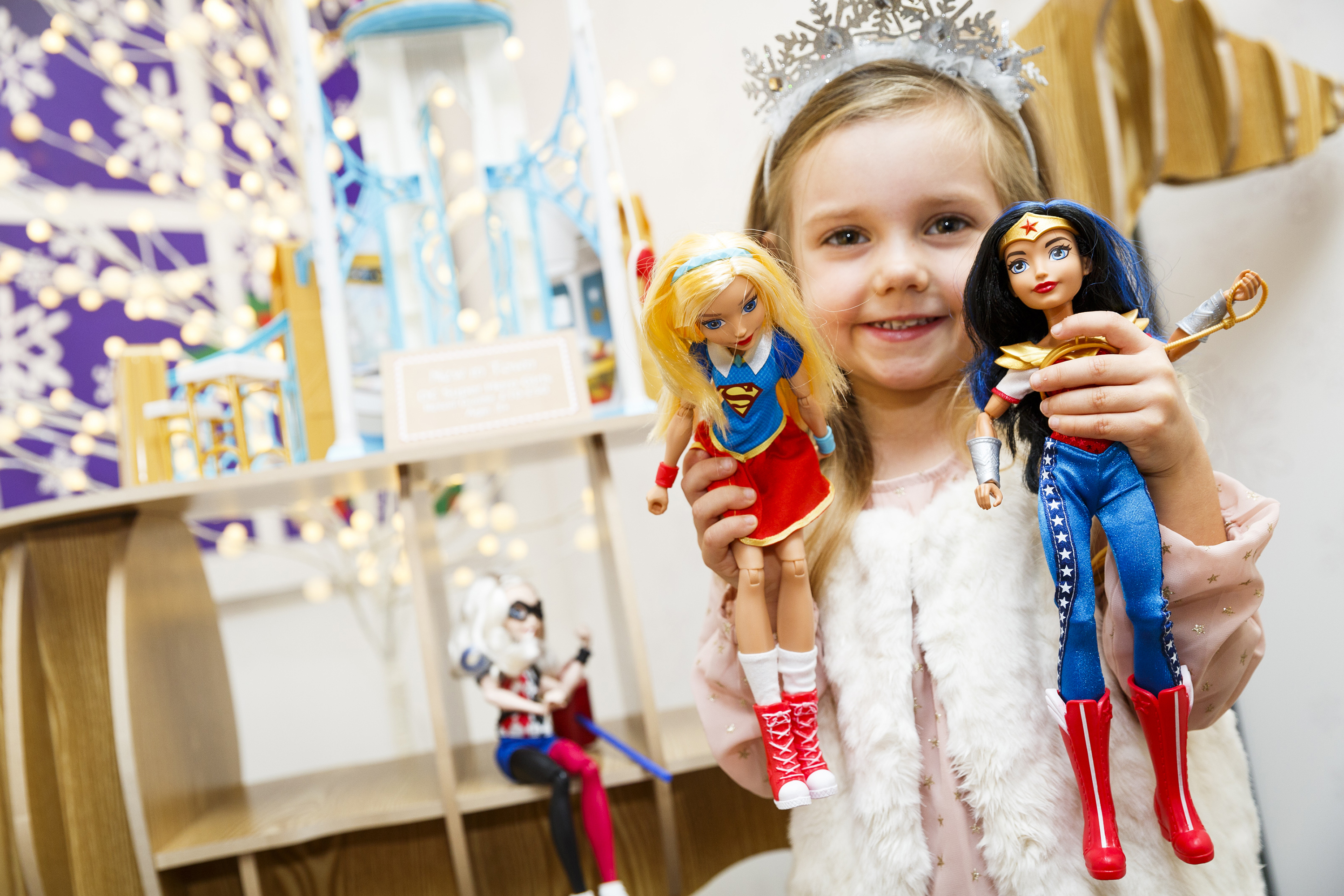For more than half a century, Mattel’s Barbie doll served as a cultural icon for young girls, who dressed her up in fashionable clothes and accessories to develop their own fantasy storylines representing American girlhood. But at the dawn of the 21st century, the toy company began to produce princess dolls from Disney film characters with established stories, and soon followed them with fashion doll heroines based on horror, fantasy, and fairy tales.
The introduction of such character fashion dolls based on children or relatives of Frankenstein and Dracula in Monster High, Snow White or Goldilocks in Ever After High, and Superman or Wonder Woman in DC Super Hero Girls has rewritten the cultural depictions of American girlhood and changed child play, according to a doctoral candidate in English at UConn.
“The narratives associated with these dolls further expand narrative possibilities by separating the dolls from the domestic, and placing them in school environments which value female friendship and adventure,” Sara Austin writes in a chapter of the recently published anthology Heroes, Heroines, and Everything In Between: Challenging Gender and Sexuality Stereotypes in Children’s Entertainment Media, CarrieLynn Reinhard and Christopher Olson eds. (Lexington Books, 2017).
The Super Hero girls all wear flat shoes, none of them have heels. Their clothes cover a lot more than Barbie clothes do, so you’re also marketing to parents who have a well-developed sense of what girls should be at this moment, or the story we should be telling through toys. — Sara Austin
Austin focuses on various aspects of 20th-century American literature, including children’s and young adult literature, gender and sexuality, African-American literature, comics, and graphic novels. In the book chapter, titled “Cold, Tactless, Brave, Heroic, Technowizards: The New Feminine of Mattel’s Fashion Dolls,” she describes how children can play with these new doll characters together, allowing them to create their own new stories while also expanding “the narrative possibilities for girlhood play, and, by extension, the cultural possibilities of gendered scripts.”
She says she observed this shift in girlhood play while conducting research for her doctoral dissertation project “The Evolution of Monsters in Contemporary American Children’s and Young Adult Culture.” Dolls based on Monster High began appearing in 2010, and DC Super Heroes arrived within the past two years, soon before Disney moved its licensing for film characters to Mattel’s competitor, Hasbro. Austin says this helped move Mattel toward “a more story-centric” direction for characters.

The appearance and dress of the new generation of fashion doll characters also is a departure from Barbie’s idealized image.
“The Super Hero girls all wear flat shoes, none of them have heels,” Austin says. “Their clothes cover a lot more than Barbie clothes do, so you’re also marketing to parents who have a well-developed sense of what girls should be at this moment, or the story we should be telling through toys.”
The focus on characters in a school environment and the introduction of new characters help with developing stories, compared with the limited world of Barbie and her boyfriend Ken, she says. A prominent example of this is the popular Harry Potter series, with its array of characters.
“Harry revitalizes the school story form, especially for American kids, who didn’t have that tradition until Harry Potter became so very popular,” Austin says. “We have things like Babysitter’s Club and Boxcar Children, which aren’t really school stories. They’re the right age group, but don’t take place in the school. Boarding schools are as much a part of American adolescent life as British life, especially contemporary American adolescet life. Harry Potter revitalized not only school stories but the romanticism of the school story, and allowed for the development of these other lines, which are all school stories. Monster High and Ever After High all take place inside these boarding schools which, like Harry Potter, have this element of magic in them for American children.”
Austin adds that the new fashion doll characters provide expanded reading opportunities for girls under the age of 10, an age group that historically has not had many comic books written for them beyond the Archie series, which is now rebooting on television with “Riverdale.” Since the 1960s, most comic books center on male super heroes through various updated stories for characters of Marvel and DC comics, including Batman, Green Arrow, and Spider-man. Many of these stories – as either comic books or graphic novels – aim at a more adult readership, she notes.
The new fashion doll super hero comic books maintain a link to their origins in past characters, but also clearly exist in today’s world, which allows for collaboration when a storyline requires it, Austin says.
“They literally populate the same world,” she says. “Mattel has been coy in the past about saying they exist in the same world, but now they’re explicitly saying that. They’re actively inviting this kind of play. In some ways you’re teaching young girls how to read comics, to make peace with crossovers. It also points out how play is conducive to comic book reading, which kids do naturally anyway.”



